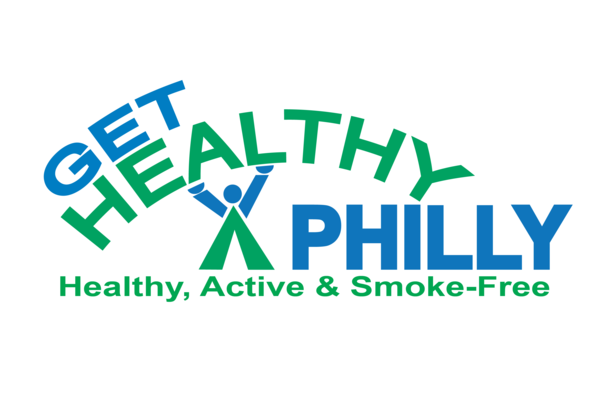How Philadelphia is Leading the Way in Teen Nutrition
Editor’s Note: PolicyLab’s communications team is interested in learning more about our blog readers and your thoughts on our content. We invite you to take this 5-minute survey to help us ensure our posts continue to be helpful and relevant to our readers. The survey will be open until May 1, 2019.
Teens across the country face a burgeoning epidemic of obesity, putting many at high risk of diabetes. We know that more than two out of five teens—and more than half of teens of color—will develop diabetes during their lifetimes if current trends continue. Too often, we treat overweight and obesity as problems caused by bad decision making without taking into account the environments in which teens and their parents are making food choices. Neighborhood food architecture, meaning the number of stores selling food and the type of food those stores sell and advertise, is a critical factor in those choices. Most teens and their parents realize this, but often they feel powerless to change their food environment.
To picture how this works, I like to think of my kitchen as a microcosm of a food environment. If I stock it with potato chips, crackers, and other kinds of salty junk food that I’m likely to be tempted by when I get home from work, hungry, after a long day, then I’m likely to eat those foods while I cook dinner. But if there’s no junk food in my kitchen, then even if I snack while I’m cooking, it will likely be on something pretty healthy.
Our teenagers are no different. If they leave school and are immediately surrounded by corner stores and fast food restaurants—with large amounts of marketing for soda, chips and sugary snacks—and especially if they are hungry or thirsty, chances are they may make what we might label “bad choices.”
But those choices are influenced by the decisions that precede them. Are students thirsty because they haven’t been allowed to drink water during the day or because they’ve avoided drinking so that they don’t have to use the bathrooms at school? Have we taken on the challenge posed by the city’s food swamps, in which unhealthy food options vastly outnumber healthy choices in many neighborhoods? And as the beverage industry emulates the tobacco industry’s playbook, focusing its advertising on children and teens of color, what can we as a city do to protect our young people from its marketing? What can teens do themselves to change their environments?
 Our team at Get Healthy Philly works to change the answers to these questions. Our work is predicated on the belief that willpower does not differ by zip code, so when we see unhealthy choices differing by neighborhood, we need to look for the inequities that may underlie those choices.
Our team at Get Healthy Philly works to change the answers to these questions. Our work is predicated on the belief that willpower does not differ by zip code, so when we see unhealthy choices differing by neighborhood, we need to look for the inequities that may underlie those choices.
We partner with the School District of Philadelphia and with other organizations across the city to increase the access and appeal of drinking water for Philadelphia’s school children. When students are encouraged to drink tap water at school, they don’t leave school thirsty and they may be less tempted by sugary drinks on their way home. We also work with out-of-school time providers to improve the nutrition of the snacks and dinners provided in afterschool programs and with the city Parks and Recreation Department on the nutrition of summer meals. And we have created a Healthy Schools internship in which Philadelphia high school students at community schools choose projects to help improve the health of their school environment.
At Get Healthy Philly, we work to broaden understanding of the importance of policy approaches that make our city environments healthier, including the city’s beverage tax, which may be one of the most important public health victories of the decade.
Philadelphia’s tax on sweetened drinks offers an important nudge away from these drinks, which are the largest source of sugar in the American diet. From the studies of the tax so far, it appears that the largest change in behavior has been among the heaviest consumers of these drinks at baseline. For the city’s teens, that change was reflected in data from the Youth Risk Behavior Survey, which showed sharp declines in sweetened drink consumption in Philadelphia that are much steeper than those seen nationally. These results offer hope that the city’s teens may be protected from the ravages of diabetes predicted for their peers nationally. The use of the tax revenue, which is accruing despite the declines in consumption we have seen occur, to improve the city’s green spaces and recreation facilities, as well as fund community schools and universal pre-k access for Philadelphia’s youngest residents, has promise to further improve outcomes for the city’s teens.
Through the success we have seen with many of these public policy efforts, Philadelphia may offer a way forward for other cities to emulate, modeling environments that can begin to make healthy choices easier for our teens and their families.
Dr. Cheryl Bettigole is the director of the Philadelphia Department of Public Health’s Division of Chronic Disease and Injury Prevention, which runs Get Health Philly—an initiative dedicated to helping Philadelphians enjoy long and productive lives free from disease, disability and premature death. She is a board-certified family physician and previously served as the chief medical officer of a migrant/community health center in New Jersey and as the clinical director of City Health Center #10. The views expressed in this piece are her own.

